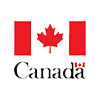Lidar Compass: A Comparative Assessment Study of Doppler Wind Lidar Technologies
As 3D Winds remains the biggest unmet observation need in numerical weather forecasting, organizations around the globe are working to understand the potential impact of various types of measurements on forecast skill, and to understand value of the measurements, especially within current budget constraints. In addition to conventional, operationally-assimilated observations, additional wind observations being considered include Doppler Wind Lidar (e.g., like that demonstrated on ESA’s Aeolus), Atmospheric Motion Vector (AMV) winds from satellite imagery, and 3D-AMVs from temporally separated IR or microwave sounding systems.
Satellite imagery, and IR and microwave sounder technologies have been demonstrated in space for decades, providing ample opportunity to optimize the technologies and retrievals, refine their data assimilation techniques, understand the impacts of and information content in the various bands and channels, and use this information to simplify and shrink systems to reduce size and cost. Doppler wind lidar, on the other hand, has only a 3.5 year history in space, with a single instrument – ESA’s groundbreaking Aeolus mission that is already being operationally assimilated at international NWP centers. Like IR and/or microwave sounders that vary widely in technological approaches and architectures (e.g., dispersive vs. Fourier transform spectrometers for IR sounding), Doppler lidars can be designed and built with a range of technologies and wavelengths, enabling wind measurements in different parts of the atmosphere with varying performance and cost metrics. With funding from NESDIS Joint Venture effort, and in support of future NOAA 3D-Winds architecture, we are currently performing a comparative assessment of measurement performance, technology readiness, mission complexity, and cost risks for a range of Doppler wind lidar (DWL) technologies. In this presentation we will review the various technologies to be studied, highlight some of their major differences, and summarize the work performed in the first ~6 months, including lidar radiometric performance modeling in combination with atmospheric optical properties (i.e., aerosol backscatter and extinction) provided by NASA GSFC’s Global Modeling and Assimilation Office.






